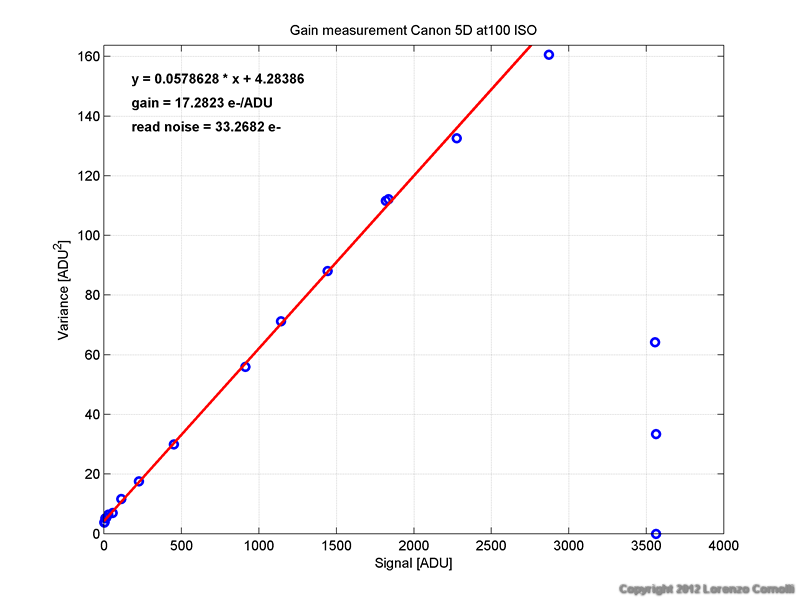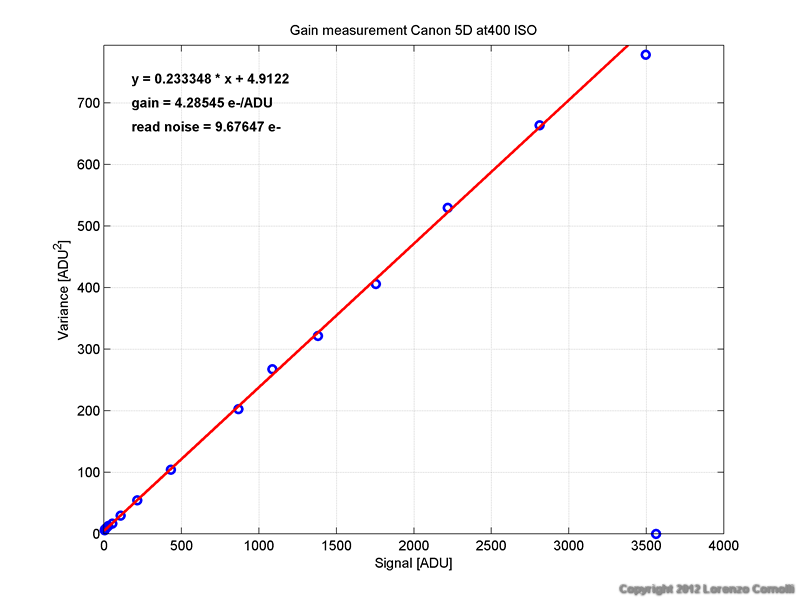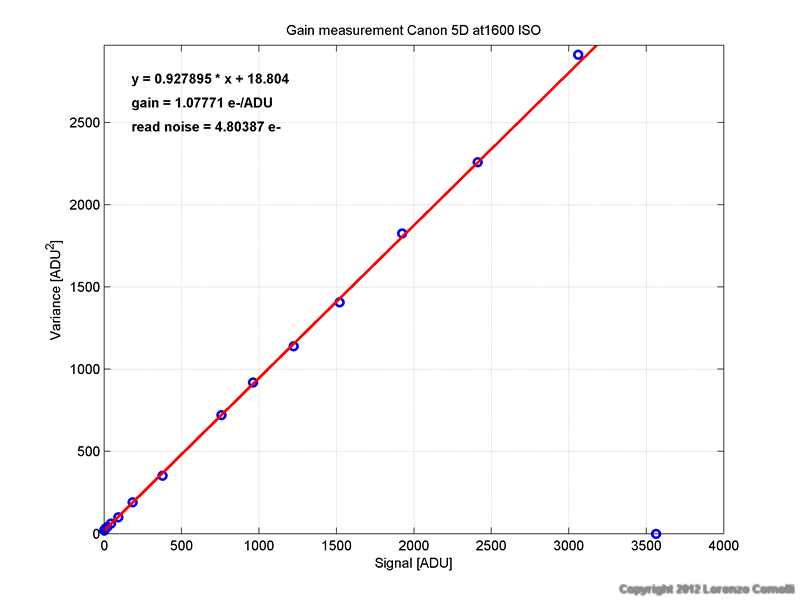|
by Lorenzo Comolli - Written in October 2012 |

Please note, this test is about a 5D model, modified with Baader filter
Introduction
In this page you'll find a technical test. Please refer here for an introduction, details and testing method.
Available sensitivities:
To distinguish between true and software interpolated sensitivities, the best method is to look at the histogram of a nearly uniform image (like a flat field). The result is shown in the figure below, and the conclusion is:
In this page you'll find a technical test. Please refer here for an introduction, details and testing method.
Available sensitivities:
- standard: from 100 to 1600 ISO with 1/3 EV steps
- extended: 3200 ISO
-
Gain. The measured gains follow quite accurately the power law.
- Unity gain at 1713 ISO, a much higher values respect to contemporary APS-C cameras (like the tested 350D and 20Da).
- Read noise. A constant
decrease is found up to 800-1600 ISO, 1600 is only a little better respect 800 ISO.
Using 3200 ISO produces no improvement
on the read noise. The reason is clear looking at the histograms: 3200
ISO is not a true sensitivity, but it is produced by internal software.
Even if the histograms show that 1000-1250 ISO are true, the read noise
is the same of 800 ISO, and so it is not advisable to use them. For
best results in low light circumstances, use 1600 ISO.
- Dynamic range. Considering a full well capacity of 3000 ADU, the approximate dynamic range is computed and reported both in the table and graph below. The best dynamic range is obviously at 100 ISO, but also 200 and 400 ISO has similar dynamic range. Above that sensitivity the dynamic range start to decrease noticeably. For best results on bright subjects, use 400 ISO or less.
To distinguish between true and software interpolated sensitivities, the best method is to look at the histogram of a nearly uniform image (like a flat field). The result is shown in the figure below, and the conclusion is:
- 3200 ISO is obtained via internal firmware, this is an extended sensitivity enabled by custom functions of the original firmware.
- looking at the read noise
data, it seems that also all intermediate 1/3 step sensitivities are not
true, because the read noise of 1000-1250 ISO is equal to 800 ISO. But
why the histogram do not show any gap?
- 100, 200, 400, 800 and 1600 ISO are true.
| ISO | gain | read noise | Approx dynamic range |
| [e-/ADU] | [e-] | [dB] |
|
| 100 | 17.2823 |
33.268 | 63.9 |
| 200 | 8.4111 |
16.932 | 63.5 |
| 400 | 4.2855 |
9.676 | 62.5 |
| 800 | 2.1024 |
6.137 | 60.2 |
| 1000 | 1.7169 |
6.224 | 58.4 |
| 1250 | 1.3585 |
6.151 | 56.4 |
| 1600 | 1.0777 |
4.804 | 56.6 |
| 3200 | 0.5414 |
4.975 | 50.3 |



Histograms

Details of measurements at each ISO setting







